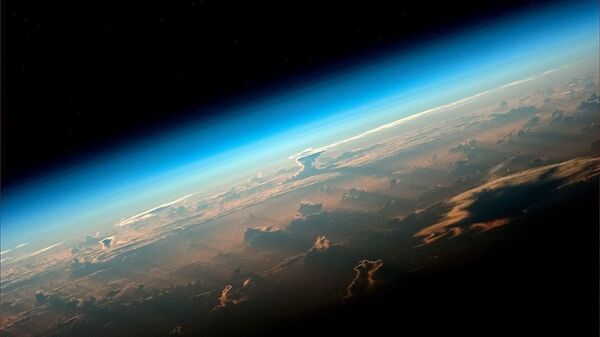The ISS craft was making its way toward the direction of the Caspian Sea 260 miles above Earth when a NASA astronaut snapped a photo sporting among other things our planet’s glowing bright green atmosphere.
“Stars glitter in the night sky above the Earth's atmospheric glow, as the International Space Station orbited 260 miles above the Earth as it was about to cross over the Caspian Sea", NASA’s caption reads.
Every great dream begins with a dreamer. Always remember, you have within you the strength, patience, & passion to reach for the stars to change the world.Glittering Lights of Earth As Seen From the Space Station https://t.co/azJrwYwdmg via @NASA pic.twitter.com/fUlEriPZyL
— (((Eugene Haynes))) (@EugeneHaynes) January 2, 2020
Another no less fantastic shot zooms in on Earth’s icy shorelines and frozen landscapes captured from 254 miles above Earth.
In a different photo, a full moon greets inquisitive viewers as it beautifully rises over Hudson Bay in northern Canada. The picture, taken shortly before the Christmas season, on 12 December, reveals what an incredible darkness falls on this part of the country during the winter months, with towns in Manitoba Province – between the Atlantic and Pacific Oceans - enjoying overall just six to seven hours of sunlight each day through December.
“A bit farther north, the Sun will not rise above the horizon again until January", the space agency shared in a statement, adding that the said photo shows “just how little sunlight reaches northern Canada during a winter day".
A view in its own right is Hudson Bay, as it’s shown in the NASA shots.
“As seasonal temperatures dropped and the hours of sunlight decreased, fast ice attached to the western shores of Hudson Bay and began spreading further south", NASA stated, gong on to explain at lenth:
“Once frozen, Hudson Bay becomes a key habitat for migrating polar bears, which spend much of their time on the ice until it starts to melt again around June".
Lingering Sea Ice on Hudson Bay #Nasa via https://t.co/u14WxAYdRI https://t.co/szp5iQ1zmC
— Lucian Andrei (@Lucian2drei) January 2, 2020
❄️ Frozen Moonrise❄️ very cool pictures! 🆒Once frozen, Hudson Bay becomes a key habitat for polar bears, which spend much of their time on the ice until it starts to melt again .🐾 pic.twitter.com/LV5LIG4ZJJ
— Vanhomrigh Essa 💎 (@essa_vanhomrigh) December 30, 2019
One of the most curious shots captured by NASA’s Christna Koch in May, who is scheduled to stay on the ISS together with colleague Nick Hague and Russian cosmonaut Alexey Ovchinin, is a detailed image showing a view of the Earth transitioning from day into night.
Air traffic during 3 days. Data from https://t.co/LeZTGIQRrg, day and night maps from NASA https://t.co/hVBnIg5MNq #maps pic.twitter.com/hjQLUm8iSC
— Wonderful Maps (@wonderfulmaps) July 15, 2019
The International Space Station hovers around 220 miles above the Earth and completes one trip around our planet every 92 minutes, according to NASA. The craft travels at an astonishing 17,200 miles per hour, which makes it possible for astronauts to be able to witness as many as 15 or 16 sunrises and sunsets every day.

